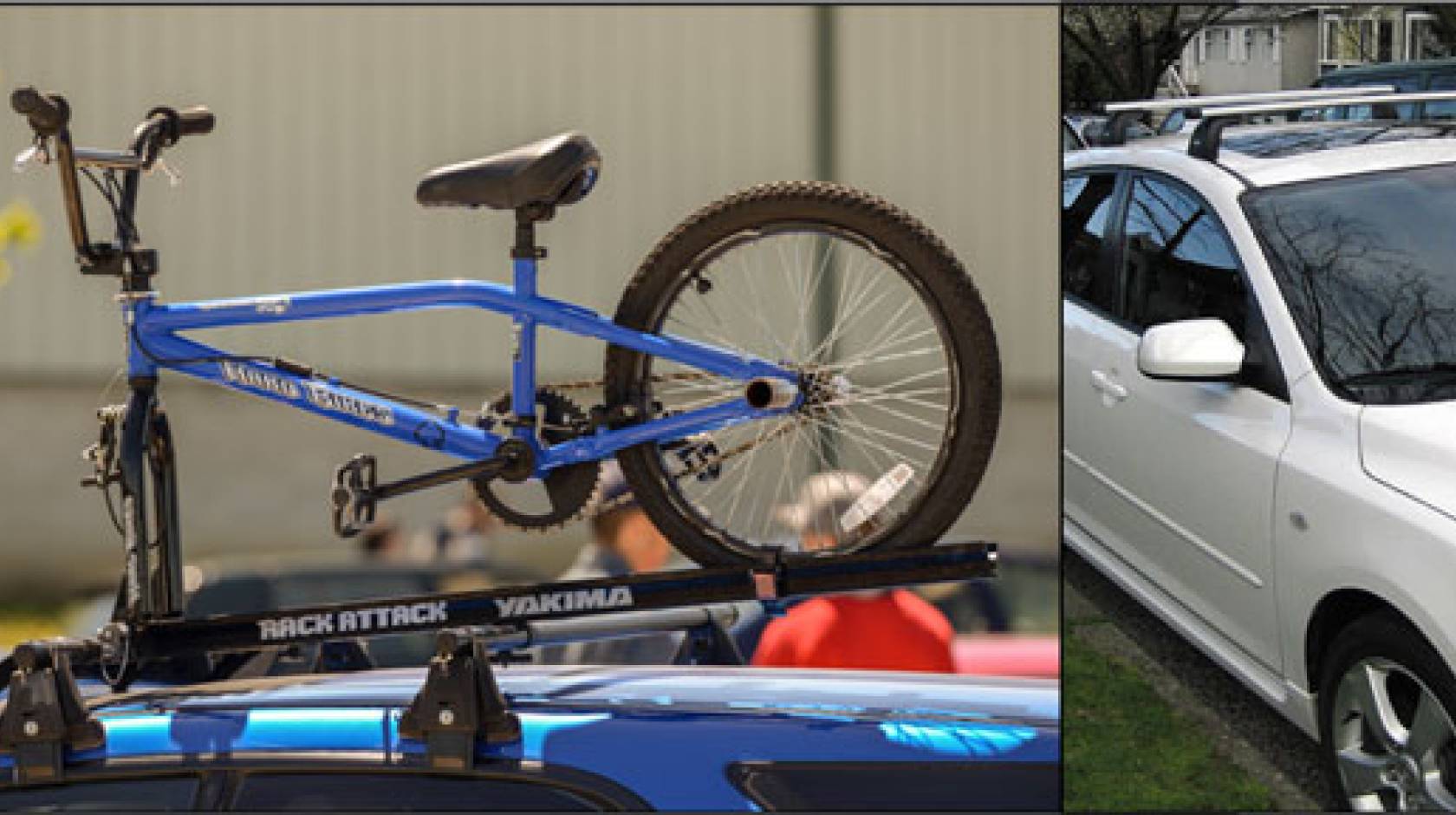Julie Chao, Lawrence Berkeley National Laboratory

As you get ready to hit the road this summer, with the kids loaded inside and the bikes strapped to the roof of your car, you may want to stop and consider that the roof rack on your car may be costing you as much as 25 percent more in gas.
In the first study of its kind, Lawrence Berkeley National Laboratory (Berkeley Lab) researcher Alan Meier, working with Yuche Chen of the National Renewable Energy Laboratory, have estimated the fuel consumption penalty of this popular and fast-growing vehicle add-on. They found that in 2015, roof racks nationwide were responsible for 0.8 percent of light-duty vehicle fuel consumption, or 100 million gallons of gasoline.
Their study was published recently in the journal Energy Policy in a paper titled “Fuel consumption impacts of auto roof racks.” In addition to projecting the fuel consumption penalty into 2040, at which time usage of roof racks is estimated to increase by about 200 percent in the United States, they also calculated how effective various policy and technology measures would be at mitigating the penalty.
“I’ve always been intrigued by energy consumption that was somehow overlooked or ignored because, for example, it wasn’t in the test procedure,” Meier said. “In this case the fuel consumption of vehicles with after-market accessories isn’t captured in the test procedure.”
Use of roof racks requires vehicles to expend more energy due to aerodynamic drag. While there have been studies of their impact on individual vehicles—depending on the configuration, the fuel consumption penalty can be 0 to 25 percent on passenger cars—this is the first study to estimate impacts at the national level. Moreover, use of roof racks is projected to increase given national travel trends.
“A national perspective is still needed to justify policy actions,” the authors write. “For comparison, the additional fuel consumption caused by roof racks is about six times larger than anticipated fuel savings from fuel cell vehicles and 40 percent of anticipated fuel savings from battery electric vehicles in 2040.”
Targeting roof rack design for greater fuel efficiency
Meier and Chen used a bottom-up approach to collect data, including using online forums and crowdsourcing as data collection sources. For example, roof rack usage rate estimates were based on nationwide highway video surveys conducted by the authors and workers recruited through Amazon Mechanical Turk.

Credit: Lawrence Berkeley National Laboratory
“It was a way of doing a national survey on the cheap,” Meier said. “We considered using some other sources, like toll booths, but we found the quality wasn’t good enough to figure out what was on the roofs.”
They also created an energy inventory model that included rack usage rates, vehicle stock, vehicle miles traveled through 2040, and vehicle-level roof rack fuel consumption penalties. They considered roof racks both loaded and unloaded. (See photos.)
The researchers then conducted a sensitivity analysis to understand how the national fuel consumption penalty would change with varying inputs, for example, whether vehicles are driven on the highway or not and whether racks are loaded or not. They found that unloaded cross roof racks (with crosspieces, as pictured) driven on the highway was the scenario that made the biggest difference; this is because the total miles traveled with unloaded racks is four to eight times higher than that for loaded racks.
“These results suggest that some fuel-saving policies should focus on reducing the number of vehicles driving with empty racks,” the researchers write.
So next they analyzed the impact of possible policy, technology, and behavior changes. For example, manufacturers have found that it is possible to make roof racks with greatly improved aerodynamics. A policy to require energy labeling of roof racks could spur greater changes, the researchers note.
Even greater energy savings would come from removing roof racks when not in use. Meier notes that they could be designed so as to be easier to remove. The researchers estimated that a government policy to minimize unloaded roof racks (admittedly extreme) in combination with more energy-efficient designs would result in cumulative savings of the equivalent of 1.2 billion gallons of gasoline over the next 26 years.
Chen conducted research as a graduate student at UC Davis and Meier conducted some of this research while at the UC Davis Energy Efficiency Center.
